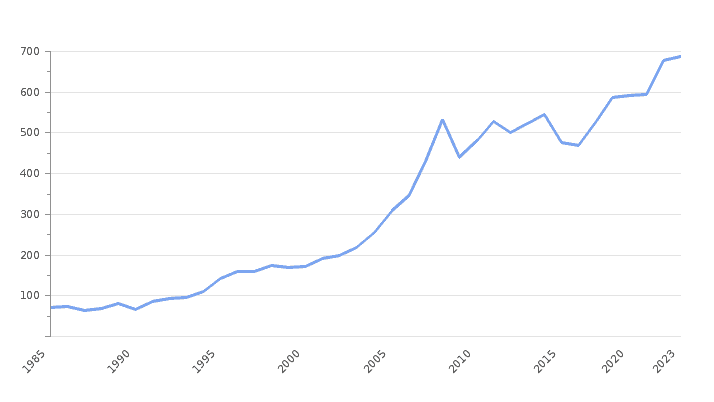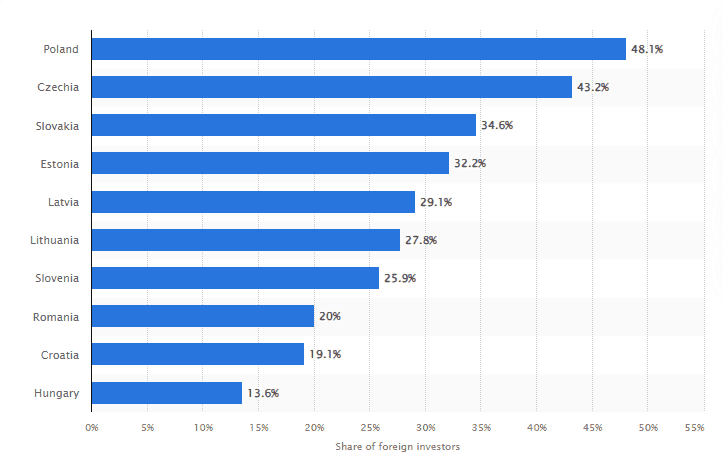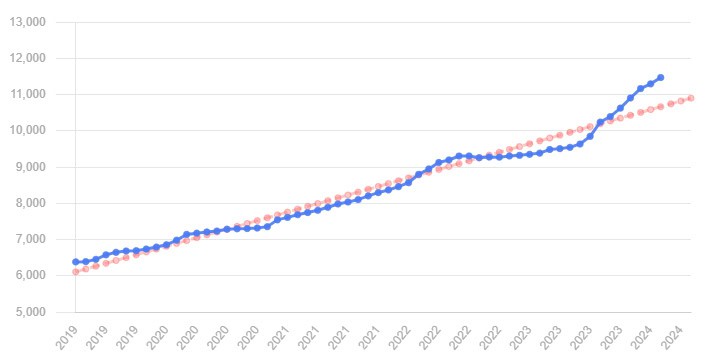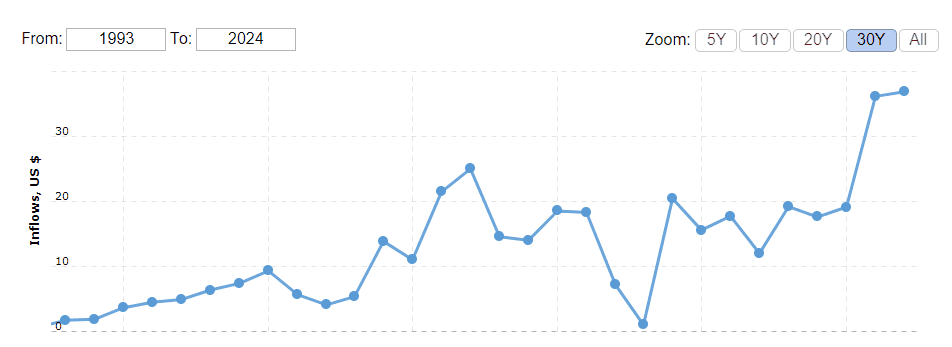Poland Real Estate Market Analysis: In-Depth Look at Prices
Why Are Prices Inflated Compared to Other European Markets?
Economic Growth: Poland has enjoyed steady economic growth, increasing disposable incomes. This rise in purchasing power has escalated demand for residential and commercial properties, pushing prices upward.

LATEST DATA ON GDP VALUE (USD BILLION)
Foreign Investment: Attracted by Poland’s relatively lower property prices than Western Europe, foreign investors have entered the market, driving up prices through increased competition and demand.
Poland Foreign Direct Investment 1993-2024

Investment attractiveness by foreign investors in Poland in 2024.5

Supply Constraints: Limited availability of land in desirable locations and bureaucratic hurdles in the construction sector have constrained supply, contributing to higher prices.
Current Government Stimulus
Housing Programs: The “Mieszkanie Plus,” “Bezpieczny kredyt 2%,” or “Mieszkanie na start” (second half of 2024) programs aim to increase the availability of affordable rental housing, targeting lower-income groups and young families. This initiative seeks to balance the market by enhancing supply.
Mortgage Subsidies: The government provides subsidies for young families and first-time buyers, making homeownership more accessible and stimulating demand in the market.
Demography Aspects
Population Growth: Poland’s population growth has increased housing demand, particularly in urban areas. Additionally, trends toward smaller household sizes have further amplified this demand. This urban-rural divide in European real estate pricing dynamics is visible in Poland. Big cities like Warsaw and Kraków flourish economically, fueling housing shortages, while outlying areas see real estate markets stagnate alongside flatlining populations and incomes.
Migration: The influx of workers from neighbouring countries and the return of Polish expatriates have increased housing demand, contributing to higher property prices.

THE AVERAGE PRICE FOR APARTMENTS IN WROCLAW
Psychological Aspects of the Heated Debate
The debate over high property prices in Poland is emotionally charged, with many feeling priced out of the market. Prospective homebuyers, particularly young people who struggle to afford homes, are frustrated and anxious. On the other hand, property owners and investors are keen to maintain high property values, seeing them as a sign of economic prosperity and security.
Prominent Opinions on Property Price Forecasts
Optimistic View: Some experts believe that property prices will continue to rise, driven by ongoing economic growth, urbanisation, and foreign investment. They argue that government initiatives and low interest rates will sustain demand.
Pessimistic View: Others predict a stabilisation or slight decline in prices due to potential economic slowdowns, saturation of the housing market in urban areas, and changes in government policies. They also point to rising construction costs and regulatory hurdles as factors that could temper future price increases.
Scientific and Historical Data on Price Trends
Historical Data: Analysis of the past two decades shows rapid growth cycles and stabilisation in the Polish property market. Despite occasional slowdowns, the overall trend has been upward.
Current Trends: Recent data indicates that while property prices are high, they have begun to stabilise, suggesting that the market is finding an equilibrium rather than heading for a significant fall.
Chances of a Significant Price Fall
Economic Stability: Poland’s stable economy reduces the likelihood of a dramatic market crash. Economic indicators do not currently suggest an impending downturn.
Government Support: Continuous government support through housing programs and mortgage subsidies will likely prevent a sharp decline in property prices.
Supply and Demand Balance: Improvements in the balance between housing supply and demand suggest a gradual stabilisation of prices rather than a sharp fall.
While Poland’s property prices are currently elevated, a significant drop seems unlikely due to economic stability, government initiatives, and balanced supply and demand dynamics. However, the market may stabilise.
conclusion
Historical data suggests a modest correction is possible but a severe crash is unlikely, absent an economic catastrophe. Factors:
- Rental solid market fundamentals (homeownership rate just 84%)
- Conservative lending standards by banks (LTVs average 77%)
- Low unemployment rate of 5.1% in 2024
- Policy response readiness (Foreign Exchange Reserves in Poland reaching an all-time high of 207800.00 USD Million in May of 2024)




